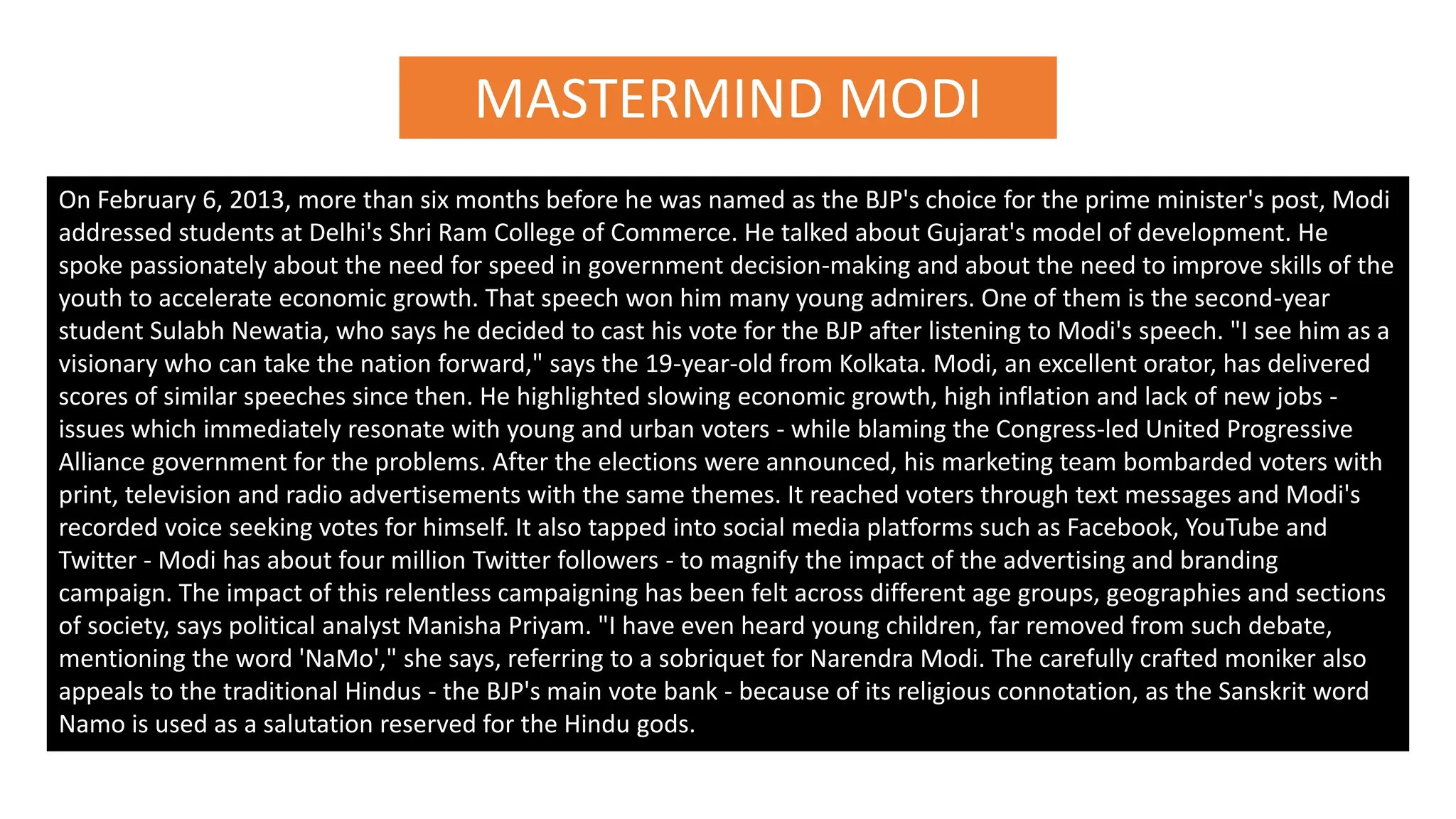This document summarizes the rise of the BJP and downfall of the Indian National Congress between 1989-2019. It discusses key factors that contributed to BJP's success, including the partnership between Modi and Shah who centralized decision-making. Younger Hindutva hardliners were emphasized for key roles, and Modi was effectively marketed as the prime ministerial candidate. In contrast, the INC faced challenges like scams, policy paralysis, and losing many state elections. This led to the BJP winning elections in 2014 and 2019, dominating Indian politics in recent years.








































